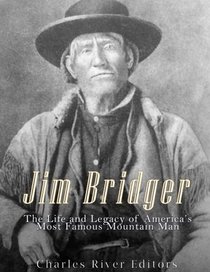Search -
Jim Bridger: The Life and Legacy of America?s Most Famous Mountain Man
Jim Bridger The Life and Legacy of Americas Most Famous Mountain Man
Author:
*Includes pictures *Includes Bridger's quotes about his expeditions *Includes online resources and a bibliography for further reading Exploration of the early American West, beginning with Lewis and Clark?s transcontinental trek at the behest of President Thomas Jefferson, was not accomplished by standing armies, the era?s new steam train techno... more »
Author:
*Includes pictures *Includes Bridger's quotes about his expeditions *Includes online resources and a bibliography for further reading Exploration of the early American West, beginning with Lewis and Clark?s transcontinental trek at the behest of President Thomas Jefferson, was not accomplished by standing armies, the era?s new steam train techno... more »
ISBN-13: 9781542620062
ISBN-10: 1542620066
Publication Date: 1/19/2017
Pages: 52
Rating: ?
ISBN-10: 1542620066
Publication Date: 1/19/2017
Pages: 52
Rating: ?
0 stars, based on 0 rating
Publisher: CreateSpace Independent Publishing Platform
Book Type: Paperback
Members Wishing: 1
Reviews: Amazon | Write a Review
Book Type: Paperback
Members Wishing: 1
Reviews: Amazon | Write a Review
Genres:
- History >> Americas >> United States




